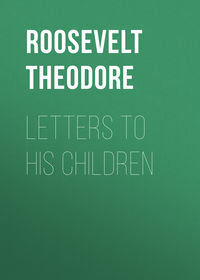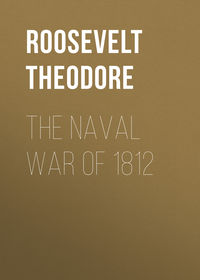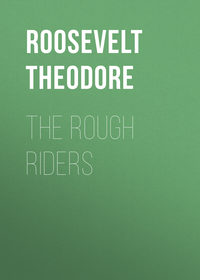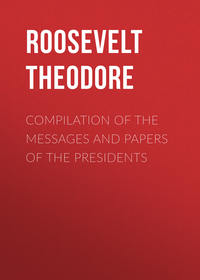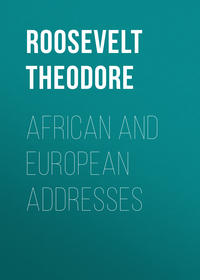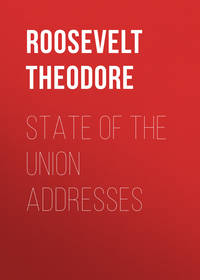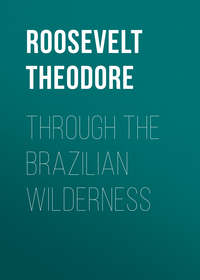 полная версия
полная версияThe Winning of the West, Volume 1
278
Do., p. 808.
279
Do., p. 478.
280
Do., p. 506.
281
Do., p. 474.
282
Do., p. 549.
283
Do., p. 471.
284
Do., pp. 435, 467, 602.
285
Do., pp. 405, 707.
286
Do., p. 808.
287
Do., p. 677.
288
Do., pp. 463, 467.
289
Do., p. 684.
290
Do., p. 435.
291
Do., pp. 468, 546.
292
Do., p. 470.
293
Jefferson MSS. Dep. of Wm. Robinson, February 28, 1800, and letter from Harry Innes, March 2, 1799, with a copy of Logan's letter as made in his note-book at the time.
294
"Am. Archives.," p. 373.
295
Under a certain Angus MacDonald, do., p. 722. They crossed the Ohio at Fish Creek, 120 miles below Pittsburg.
296
"Am. Archives," IV., Vol. I., pp. 682, 684.
297
Stewart's Narrative.
298
"Am. Archiv." Col. Wm. Preston's letter, Sept. 28, 1774.
299
Do., p. 872.
300
Doddridge, 235.
301
See Mag. of Am. Hist., XV., 256.
302
De Haas, p. 161. He is a very fair and trustworthy writer; in particular, as regards Logan's speech and Cresap's conduct. It is to be regretted that Brantz Mayer, in dealing with these latter subjects, could not have approached them with the same desire to be absolutely impartial, instead of appearing to act solely as an advocate.
303
His eight captains were George Matthews, Alexander McClannahan, John Dickinson, John Lewis (son of William), Benjamin Harrison, William Paul, Joseph Haynes, and Samuel Wilson. Hale, "Trans-Alleghany Pioneers," p. 181.
304
His seven captains were Matthew Arbuckle, John Murray, John Lewis (son of Andrew), James Robertson, Robert McClannahan, James Ward, and John Stewart (author of the Narrative).
305
As the Kanawha was sometimes called.
306
Whose five captains were Evan Shelby, Russell, Herbert, Draper, and Buford.
307
Born December 11, 1750, near Hagerstown, Md.
308
Letter of Col. Wm. Preston, September 28, 1774. "Am. Archives."
309
Letter of one of Lord Dunmore's officers, November 21, 1774. "Am. Archives," IV., Vol. I., p. 1017. Hale gives a minute account of the route followed; Stewart says they started on the 11th.
With the journal of Floyd's expedition, mentioned on a previous page, I received MS. copies of two letters to Col. William Preston, both dated at Camp Union, at the Great Levels; one, of September 8th from Col. Andrew Lewis, and one of September 7th (9th?) from Col. William Christian.
Col. Lewis' letter runs in part: "From Augusta we have 600; of this county [Botetourt] about 400; Major Field is joined with 40…. I have had less Trouble with the Troops than I expected…. I received a letter from his Lordship last Sunday morning which was dated the 30th of August at Old Towns, which I take to be Chresops, he then I am told had Col. Stephens and Major Conolly at his Elbow as might easily be discovered by the Contents of his Letter which expressed his Lordship's warmest wishes that I would with all the troops from this Quarter join him at the mouth of the little Kanaway, I wrote his Lordship that it was not in my power to alter our rout…. The Indians wounded a man within two miles of us … and wounded another, from this we may expect they will be picking about us all the March." He states that he has more men than he expected, and will therefore need more provisions, and that he will leave some of his poorest troops to garrison the small fort.
Col. Christian's letter states that the Augusta men took with them 400 pack-horses, carrying 54,000 pounds of flour, and 108 beeves, they started "yesterday." Field marched "this evening", Fleming and his 450 Botetourt men, with 200 pack-horses, "are going next Monday." Field had brought word that Dunmore expected to be at the mouth of the Great Kanawha "some days after the 20th." Some Indians had tried to steal a number of pack-horses, but had been discovered and frightened off.
Christian was very much discontented at being bidden to stay behind until he could gather 300 men, and bring up the rear, he expresses his fear that his men will be much exasperated when they learn that they are to stay behind, and reiterates "I would not for all I am worth be behind crossing the Ohio and that we should miss lending our assistance." Field brought an account of McDonald's fight (see ante, p. 216), he said the whites were 400 and the Indians but 30 strong, that the former had 4 men killed and 6 wounded, the Indians but 3 or 4 killed and 1 captured, and their town was burnt. The number of the Shawnees and their allies was estimated at 1,200 warriors that could be put into one battle. The 400 horses that had started with the Augusta men were to return as fast as they could (after reaching the embarkment point, whence the flour was carried in canoes).
310
When the Revolutionary war broke out the Earl not only fought the revolted colonists with all legitimate weapons, but tried to incite the blacks to servile insurrection, and sent agents to bring his old foes, the red men of the forest, down on his old friends, the settlers. He encouraged piratical and plundering raids, and on the other hand failed to show the courage and daring that are sometimes partial offsets to ferocity. But in this war, in 1774, he conducted himself with great energy in making preparations, and showed considerable skill as a negotiator in concluding the peace, and apparently went into the conflict with hearty zest and good will. He was evidently much influenced by Conolly, a very weak adviser, however; and his whole course betrayed much vacillation, and no generalship.
311
Smyth's "Tour," II., p. 179.
312
"Am. Archives," p. 1017.
313
Do. Stewart says they reached the mouth of the Kanawha on Oct. 1st; another account says Sept. 30th; but this is an error, as shown both by the "Am. Archives" and by the Campbell MSS.
314
Hale, 182.
315
Campbell MSS. Letter of Isaac Shelby to John Shelby, Oct. 16, 1774. A portion of this letter, unsigned, was printed in "Am. Archives," p. 1016, and in various newspapers (even at Belfast; see Hale, p. 187, who thinks it was written by Captain Arbuckle). As it is worth preserving and has never been printed in full I give it in the Appendix.
316
Stewart's Narrative.
317
Smyth, II., p. 158. He claims to have played a prominent part in the battle. This is certainly not so, and he may not have been present at all; at least Col. Stewart, who was there and was acquainted with every one of note in the army, asserts positively that there was no such man along; nor has any other American account ever mentioned him. His military knowledge was nil, as may be gathered from his remark, made when the defeats of Braddock and Grant were still recent, that British regulars with the bayonet were best fitted to oppose Indians.
318
Some accounts say that he was accompanied by Kenton and McCulloch; others state that no messenger arrived until after the battle. But this is certainly wrong. Shelby's letter shows that the troops learned the governor's change of plans before the battle.
319
"Am. Archives," IV., Vol. J., p. 1017; and was joined by Col. Christian's three hundred the day after the battle.
320
Campbell MSS. Letter of Col. William Preston (presumably to Patrick Henry), Oct. 31, 1774. As it is interesting and has never been published, I give it in the Appendix.
321
Many of the white accounts make their number much greater, without any authority; Shelby estimates it at between eight hundred and one thousand. Smith, who generally gives the Indian side, says that on this occasion they were nearly as numerous as the whites. Smyth, who bitterly hates the Americans, and always belittles their deeds, puts the number of Indians at nine hundred; he would certainly make it as small as possible. So the above estimate is probably pretty near the truth, though it is of course impossible to be accurate. At any rate, it was the only important engagement fought by the English or Americans against the northwestern Indians in which there was a near approach to equality of force.
322
Campbell MSS. Shelby's letter. Their names were Mooney and Hickman; the latter was killed. Most historians have confused these two men with the two others who discovered the Indians at almost the same time.
323
"Am. Archives," IV., Vol, I., p. 1017.
324
Do., p. 1017. Letter from Stanton, Virginia, Nov. 4, 1774, says 3/4 of a mile; Shelby says 1/2 of a mile.
325
Do., Letter of Nov. 17th.
326
The frontier expression for covering one's self behind a tree-trunk.
327
A small stream running into the Kanawha near its mouth. De Haas, p. 151.
328
Campbell MSS. Preston's, letter.
329
"Am. Archives." Letter of November 4, 1774.
330
Campbell MSS. Preston's letter.
331
Stewart's Narrative.
332
Led by Isaac Shelby, James Stewart, and George Matthews.
333
Campbell MSS. Preston's letter.
334
"Am. Archives" Letter of November 4, 1774. It is doubtful if Logan was in this fight; the story about Cornstalk killing one of his men who flinched may or may not be true.
335
Hale, 199, the plunder was afterwards sold at auction for L74 4s. 6d.
336
These are the numbers given by Stewart, but the accounts vary greatly. Monette ("Valley of the Mississippi,") says 87 killed and 141 wounded. The letters written at the time evidently take no account of any but the badly wounded. Shelby thus makes the killed 55, and the wounded (including the mortally hurt) 68. Another account ("Am. Archives," p. 1017) says 40 men killed and 96 wounded, 20 odd of whom were since dead, whilst a foot-note to this letter enumerates 53 dead outright, and 87 wounded, "some of whom have since died." It is evidently impossible that the slightly wounded are included in these lists; and in all probability Stewart's account is correct, as he was an eye-witness and participant.
337
Twenty-one were scalped on the field; the bodies of 12 more were afterwards found behind logs or in holes where they had been lain, and 8 eventually died of their wounds. (See "American Archives," Smith, Hale, De Haas, etc.) Smith, who wrote from the Indian side, makes their loss only 28; but this apparently does not include the loss of the western Indians, the allies of the Shawnees, Mingos, and Delawares.
338
Smyth, the Englishman, accuses Lewis of cowardice, an accusation which deserves no more attention than do the similar accusations of treachery brought against Dunmore. Brantz Mayer speaks in very hyperbolic terms of the "relentless Lewis," and the "great slaughter" of the Indians.
339
Wayne won an equally decisive victory, but he outnumbered his foes three to one. Bouquet, who was almost beaten, and was saved by the provincial rangers, was greatly the superior in force, and suffered four times the loss he inflicted. In both cases, especially that of Bouquet, the account of the victor must be received with caution where it deals with the force and loss of the vanquished. In the same way Shelby and the other reporters of the Kanawha fight stated that the Indians lost more heavily than the whites.
340
The stories of how Lewis suspected the earl of treachery, and of how the backwoodsmen were so exasperated that they wished to kill the latter, may have some foundation; but are quite as likely to be pure inventions, made up after the Revolutionary war. In De Haas, "The American Pioneer," etc., can be found all kinds of stories, some even told by members of the Clark and Lewis families, which are meant to criminate Dunmore, but which make such mistakes in chronology—placing the battle of Lexington in the year of the Kanawha fight, asserting that peace was not made till the following spring, etc.—that they must be dismissed offhand as entirely untrustworthy.
341
Stewart's Narrative.
342
"Am. Archives," IV. St. Clair's letter, Dec. 4, 1774. Also Jefferson MSS. Dep. of Wm. Robinson, etc.
343
See De Haas, 162.
344
"Am. Archives," IV., Vol. I., pp. 1013, 1226.
345
John Gibson, afterwards a general in the army of the United States. See Appendix.
346
Jefferson MSS. Statements of John Gibson, etc.; there is some uncertainty as to whether Logan came up to Gibson at the treaty and drew him aside, or whether the latter went to seek the former in his wigwam.
347
Jefferson Papers (State Department MSS.), 5-1-4. Statement of Col. John Gibson to John Anderson, an Indian trader at Pittsburg, in 1774. Anderson had asked him if he had not himself added somewhat to the speech; he responded that he had not, that it was a literal translation or transcription of Logan's words.
348
Jefferson MSS. Affidavits of Andrew Rogers, Wm. Russell, and others who were present.
349
Clark's letter.
350
See De Haas, 167.
351
These are Smith's estimates, derived largely from Indian sources. They are probably excessive, but not very greatly so.
352
It is difficult to understand why some minor historians consider this war as fruitless.
353
John Hall; it is worth while preserving the name of the ringleader in so brutal and cowardly a butchery. See Stewart's Narrative.
354
The first permanent settlement was Harrodsburg, then called Harrodstown, founded in 1774, but soon abandoned, and only permanently occupied on March 18, 1775, a fortnight before Boon began the erection of his fort.
355
The whole account of this treaty is taken from the Jefferson MSS., 5th Series, Vol. VIII.; "a copy of the proceedings of the Virginia Convention, from June 15 to November 19, 1777, in relation to the Memorial of Richard Henderson, and others"; especially from the depositions of James Robertson, Isaac Shelby, Charles Robertson, Nathaniel Gist, and Thomas Price, who were all present. There is much interesting matter aside from the treaty; Simon Girty makes depositions as to Braddock's defeat and Bouquet's fight; Lewis, Croghan, and others show the utter vagueness and conflict of the Indian titles to Kentucky, etc., etc. Though the Cherokees spoke of the land as a "dark" or "bloody" place or ground, it does not seem that by either of these terms they referred to the actual meaning of the name Kentucky. One or two of the witnesses tried to make out that the treaty was unfairly made; but the bulk of the evidence is overwhelmingly the other way.
Haywood gives a long speech made by Oconostota against the treaty; but this original report shows that Oconostota favored the treaty from the outset, and that it was Dragging Canoe who spoke against it. Haywood wrote fifty years after the event, and gathered many of his facts from tradition; probably tradition had become confused, and reversed the position of the two chiefs. Haywood purports to give almost the exact language Oconostota used; but when he is in error even as to who made the speech, he is exceedingly unlikely to be correct in any thing more than its general tenor.
356
Then sometimes called the Louisa; a name given it at first by the English explorers, but by great good-fortune not retained.
357
Collins, II., 498. Letter of Daniel Boon, April 1, 1775. Collins has done good work for Kentucky history, having collected a perfect mass of materials of every sort. But he does not discriminate between facts of undoubted authenticity, and tales resting on the idlest legend; so that he must be used with caution, and he is, of course, not to be trusted where he is biassed by the extreme rancor of his political prejudices. Of the Kentucky historians, Marshall is by far the most brilliant, and Mann Butler the most trustworthy and impartial. Both are much better than Collins.
358
Benjamin Logan; there were many of the family in Kentucky. It was a common name along the border; the Indian chief Logan had been named after one of the Pennsylvania branch.
359
McAfee MSS.
360
Boon's letter.
361
Richard Henderson's "Journal of an Expedition to Cantucky in 1775" (Collins).
362
April 5th.
363
It is printed in the Filson Club publications; see "The Wilderness Road," by Thomas Speed, Louisville, Ky., 1886; one of the best of an excellent series.
364
It is not necessary to say that "corn" means maize; Americans do not use the word in the sense in which it is employed in Britain.
365
McAfee MSS. Some of the McAfees returned with Henderson.
366
Boon's letter, Henderson's journal, Calk's diary, McAfee's autobiography all mention the way in which the early settlers began to swarm out of the country in April, 1775. To judge from their accounts, if the movement had not been checked instantly the country would have been depopulated in a fortnight, exactly as in 1774.
367
It must be remembered that the outrages of the Indians this year in Kentucky were totally unprovoked; they were on lands where they did not themselves dwell, and which had been regularly ceded to the whites by all the tribes—Iroquois, Shawnees, Cherokees, etc.—whom the whites could possibly consider as having any claim to them. The wrath of the Kentuckians against all Indians is easily understood.
368
When the block-house and palisade enclosed the farm of a single settler the "tun," in its still earlier sense, was even more nearly reproduced.
369
Four hundred acres were gained at the price of $2.50 per 100 acres, by merely building a cabin and raising a crop of corn; and every settler with such a "cabin right" had likewise a preemption right to 1,000 acres adjoining, for a cost that generally approached forty dollars a hundred.
370
In Mr. Phelan's scholarly "History of Tennessee," pp. 202-204, etc., there is an admirably clear account of the way in which Tennessee institutions (like those of the rest of the Southwest) have been directly and without a break derived from English institutions; whereas many of those of New England are rather pre-Normanic revivals, curiously paralleled in England as it was before the Conquest.
371
Boon's deposition, July 29, 1795.
372
Mann Butler, p. 31.
373
Henderson's Journal. The beauty of the elm impressed him very greatly. According to the list of names eighteen, not seventeen, members were elected; but apparently only seventeen took part in the proceedings.
374
Henderson's Journal.
375
"Our game, the only support of life amongst many of us, and without which the country would be abandoned ere to-morrow." Henderson's address.
376
Journal of the Proceedings of the House of Delegates or Representatives of the Colony of Transylvania.
377
Possibly in 1775, certainly in 1776; MS. autobiography of Rev. Wm. Hickman. In Durrett's library.
378
"Life of Rev. Charles Nerinckx," by Rev. Camillus P. Maes, Cincinnati, 1880, p. 67.
379
Smyth, p. 330.
380
Gov. James T. Morehead's "address" at Boonsborough, in 1840 (Frankfort, Ky., 1841).
381
Do., p. 51. Mrs. Boon, Mrs. Denton, Mrs. McGarry, Mrs. Hogan; all were from the North Carolina backwoods; their ancestry is shown by their names. They settled in Boonsborough and Harrodsburg.
382
Like Logan he was born in Pennsylvania, of Presbyterian Irish stock. He had received a good education.
383
Morehead, p. 52.
384
Shelby's MS. autobiography, in Durrett's Library at Louisville.
385
These frontiersmen called a stream a "run," "branch," "creek," or "fork," but never a "brook," as in the northeast.
386
"History of Lexington," G. W. Ranck, Cincinnati, 1872, p. 19. The town was not permanently occupied till four years later.
387
Mr. Phelan, in his "History of Tennessee," deserves especial praise for having so clearly understood the part played by the Scotch-Irish.
388
The Campbell MSS. contain allusions to various such feuds, and accounts of the jealousies existing not only between families, but between prominent members of the same family.
389
See Milfort, Smyth, etc., as well as the native writers.
390
Executions for "treason," murder, and horse-stealing were very common. For an instance where the three crimes were treated alike as deserving the death penalty the perpetrators being hung, see Calendar of Virginia State Papers, Vol. III., p. 361.
391
"American Archives," 4th Series, Vol. VI., p. 541. But parties of young braves went on the war-path from time to time.
392
Do., Vol III., p. 790.
393
Do., Vol. VI., p. 1228.
394
See Milfort, pp. 46, 134, etc.
395
"American Archives," 4th Series, Vol. I., p. 1094, for example of fight between Choctaws and Creeks.
396
Do., Vol. IV., p. 317. Letter of Agent John Stuart to General Gage, St. Augustine, Oct. 3, 1775.


